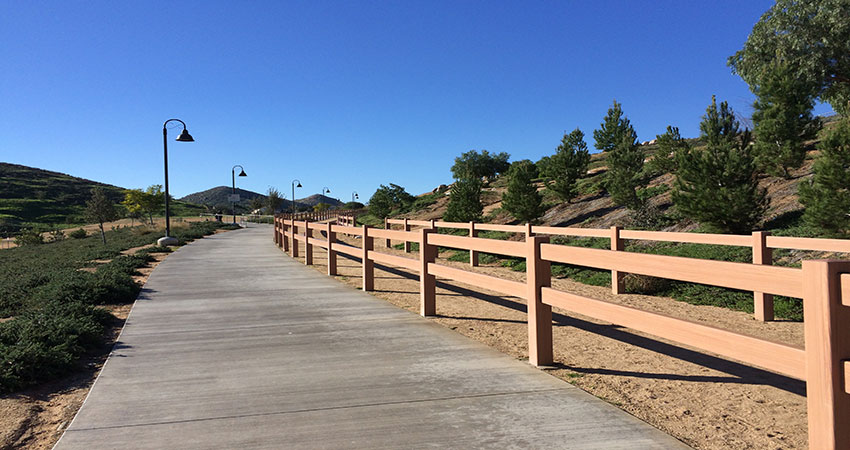
Riverside has a trail for everyone! There are trails for all ability levels throughout the City. Bring your families, bring your friends, and head outside to enjoy Riverside trails!
Signature Trails
There are several trails within the City that are special to the community, either because of their historic significance or otherwise unique characteristics.
- Frank A. Miller Mount Rubidoux Memorial Park
- Santa Ana River Trail
- Sycamore Canyon Wilderness Park
- Victoria Avenue
Park Loops
The following parks have concrete walking paths and/or decomposed granite walking trails:
- Andulka Park - 5201 Chicago Ave.
- Arlington Heights Sports Park - 9401 Cleveland Ave.
- Bordwell Park - 2008 Martin Luther King Blvd.
- Challen Park - 4600 Challen Ave.
- Fairmount Park - 2601 Fairmount Blvd.
- Islander Park - 3794 Mt. Vernon Rd.
- Martha McLean/Anza Narrows - 5759 Jurupa Ave.
- Rutland Park - 7000 Rutland Ave.
- Shamel Park - 3650 Arlington Ave.
- Villegas Park - 3091 Esperanza St.
Other Trails
- Orangecrest Neighborhood (John F. Kennedy Dr., Wood Rd., Van Buren Bl., Bountiful St., Trautwein Rd.) [show photo]
- Gage Canal (between Arlington Bl. and Central Ave.)
- Bikeways
- Walk Riverside: Routes and Trails
Trail Etiquette
- Only use open trails: Respect trail and road closures — ask a land manager for clarification if you are uncertain about the status of a trail. Do not trespass on private land. Obtain permits or other authorization as required. Be aware that bicycles are not permitted in areas protected as state or federal Wilderness.
- Leave no trace: Be sensitive to the dirt beneath you. Wet and muddy trails are more vulnerable to damage than dry ones. When the trail is soft, consider other recreational options. This also means staying on existing trails and not creating new ones. Don't cut switchbacks. Be sure to pack out at least as much as you pack in.
- Be in control and know your limits: Always pay attention to what you are doing and where you are going. Inattention for even a moment could put yourself and others at risk. Obey all applicable speed regulations and other recommendations. Stay within your fitness and navigational limits.
- Yield appropriately: Do your utmost to let your fellow trail users know you're coming — a friendly greeting or bell ring are good methods. Try to anticipate other trail users as you ride around corners. Bicyclists should yield to other non-motorized trail users. Bicyclists traveling downhill should yield to ones headed uphill, unless the trail is clearly signed for one-way or downhill-only traffic. Bicycles yield to equestrians and pedestrians, and pedestrians yield to equestrians. In general, strive to make each pass a safe and courteous one.
- Do not scare animals: Animals are easily startled by an unannounced approach, a sudden movement or a loud noise. Give animals enough room and time to adjust to you. When passing horses, use special care and follow directions from the horseback riders (ask if uncertain).
- Plan ahead: Know your equipment, your ability and the area in which you are riding and prepare accordingly. Strive to be self-sufficient: keep your equipment in good repair and carry necessary supplies for changes in weather or other conditions. Bicyclists should always wear a helmet and appropriate safety gear.
- Don’t go alone: Bring a companion. There is safety in numbers.
- Tell someone: Tell someone where you are going and when you plan to return.
